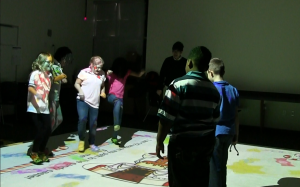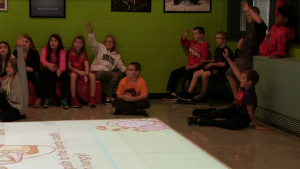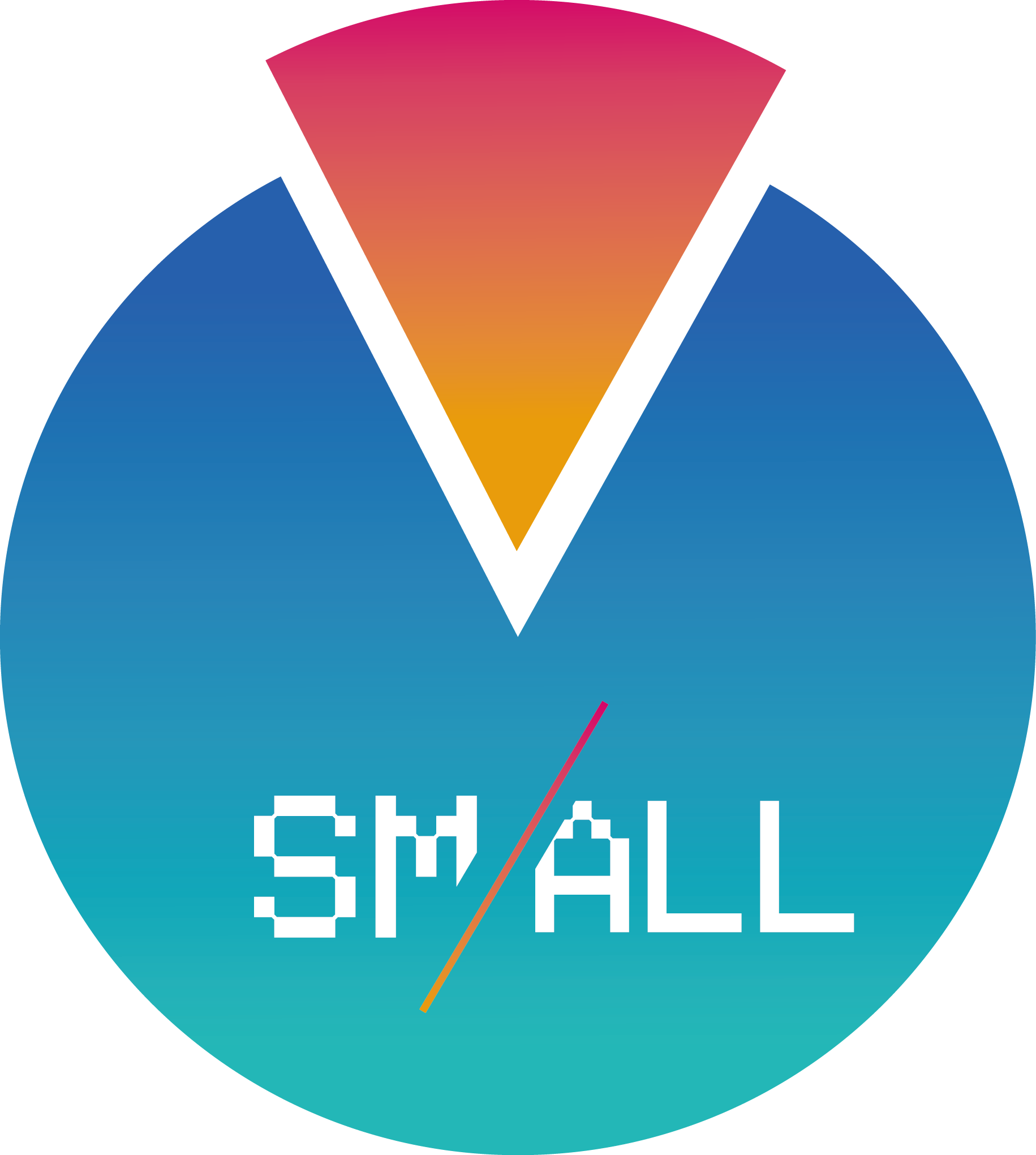Hi everyone! Welcome to week 13 of our project.
This will be a really short week for us considering the upcoming thanksgiving break.
We have a few things planned for the two working days that we have before the team disappears for the holidays!
Playtests Week 13:
We had a playtest at Elizabeth Forward Middle School.


The topic we are now focusing is embodied learning. Embodied learning is the backbone of SMALLab, but some questions show up about we not using the middle of the space.
To solve this confusion, I reached out to David Birchfield, the CEO of SMALLab and an expert of embodied learning who has published several papers.
He understands our worries about if the embodied learning is enough and if we have to take advantage of the middle space to increase embodiment elements.
First, he indicates it is not necessary to worry about if we have enough embodied learning. Because there is effective embodied learning in our game, and the reasons can be summed up as follow:
1. We have got Embodied Interaction and Multi-modal Feedback. All scenarios are designed so that students move their corporal bodies and use multiple senses. We attempt to engage modalities that are typically not stimulated during regular instruction. For example, while the fraction is occurring the image on the floor shows the animation of splitting and probably engages the vestibular system.
2. We have got Collaboration in our game. All students in the class are engaged in tasks and play a role. Because they have responsibility, even as helpers on the sidelines when not in the space, they stay attuned. These game-style Communities of Practice are powerful predictors of learning and aid in leading users on the pathway to expertise.
3. We have got Novelty. Research has indicated that novelty (and the perception of novelty) is extremely important for learning information and maintaining attention. Giving students opportunities to experience content in a novel manner turns on the limbic rewards system.
Then, David demonstrated although we have no interaction in the middle, we cannot say we do not have enough embodied learning because the amount of embodiment is quite huge such as the floor projection and the controllers with glowballs. The device itself provides better embodied learning environment than keyboard and mouse. (Birchfield, D., & Johnson-Glenberg, M. (2012). A next gen interface for embodied learning: SMALLab and the geological layer cake. Interdisciplinary Advancements in Gaming, Simulations and Virtual Environments: Emerging Trends: Emerging Trends, 51.) Take table tennis as an example – although players will not step on the middle of the floor or table, they have enough interactions on each side and in this way they also have space to observe the opponents. Also, it is a great symbol to divide the students into 2 different teams.
In conclusion, it is true that students will not be engaged a lot in the center of the floor, but they are not necessary to do so if we already have enough embodied interactions.
I think it solves my confusion under large circumstances. I hope it is more convincing to you as well.
Please let me know what you think.

I was able to find good advice from your blog articles.